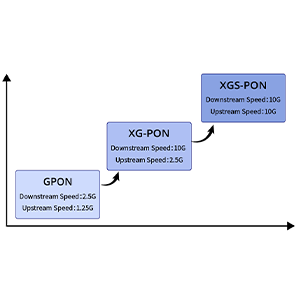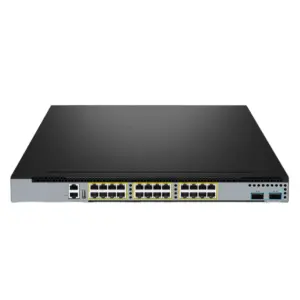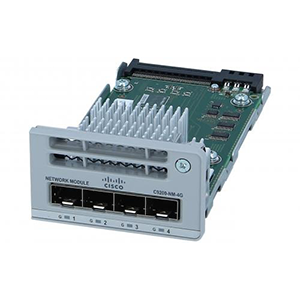Hello everyone! PON technology is undoubtedly the mainstream choice in the current optical access network construction, among which three mainstream technologies, GPON, XG-PON and XGS-PON, have attracted much attention in the industry. These three PON technologies have their own characteristics and play an important role in the construction of optical access networks.
Today, gracyfiber is pleased to provide you with a comprehensive analysis of the characteristics of these three PON technologies and their applicability in different application scenarios, helping you to fully understand the current development trends of optical access network technology and plan for your future network. Provide valuable references. I believe that through this in-depth comparative analysis, you will be able to choose the most suitable technical solution for your optical access network and help enterprises accelerate digital transformation.
GPON technology overview
Let me give you an overview of GPON (Gigabit-capable Passive Optical Network) technology:
Basic principles of GPON:
- GPON is a high-speed optical fiber access technology standard based on passive optical splitters.
- Using a combination of TDM (Time Division Multiplexing) and WDM (Wavelength Division Multiplexing) to achieve uplink and downlink data transmission.
- The optical fiber trunk line is led from the central office and distributed to the user terminal ONT (Optical Network Terminal) through a passive optical splitter.
GPON main technical features and applications:
- High rate: Supports uplink 1.2Gbps and downlink 2.4Gbps transmission rates.
- Long distance: The maximum transmission distance is up to 20 kilometers.
- High efficiency: Sharing optical fiber resources improves the efficiency of network resource utilization.
- Widely used: Mainly used in FTTH (Fiber To The Home) fiber-to-the-home access network.
GPON’s development history and its position in the industry:
- The GPON standard was released by the ITU-T organization in 2003, and the G.984 series of standards were formulated.
- After years of development, GPON has become one of the most mainstream technologies for optical fiber access networks.
- Globally, the scale of GPON deployment is growing rapidly and it dominates the optical fiber access market.
- In our country, GPON technology has also been widely used and promoted, and is the key to realizing “the advancement of light and the retreat of copper”.
In general, GPON, as a high-speed, efficient, long-distance optical fiber access technology, has been widely used in FTTH and other fields, and has become one of the mainstream technical standards in the industry. Its development is of great significance in promoting the construction of optical fiber broadband networks.
XG-PON technology overview
Let me introduce to you XG-PON (10-Gigabit-capable Passive Optical Network) technology:
Technical features of XG-PON:
- XG-PON is the subsequent evolution standard of GPON technology, released by ITU-T in 2010.
- Main technical features include:
- Supports symmetrical transmission rates up to 10Gbps (uplink 10Gbps, downlink 10Gbps).
- Adopting more advanced coding, modulation and other technologies, the transmission performance is greatly improved.
- Maintains the architectural features of GPON such as passive optical branching and wavelength division multiplexing.
- Highly compatible with GPON network and can be upgraded smoothly.
Advantages of XG-PON compared to GPON:
- Transmission rate: XG-PON’s 10Gbps rate is 4 times that of GPON.
- Bandwidth resources: XG-PON can provide more sufficient bandwidth resources.
- User experience: Able to provide users with a higher quality broadband service experience.
- Futureability: XG-PON paves the way for the next generation of optical fiber access networks.
The role of XG-PON in meeting high bandwidth requirements:
- With the rapid development of video, cloud computing and other services, users’ demand for bandwidth continues to increase.
- XG-PON can meet the needs of these emerging services by significantly increasing the transmission rate and bandwidth.
- Especially in large-bandwidth application scenarios, such as data center interconnection, 4K/8K video transmission, etc., XG-PON plays a key role.
- Therefore, the development of XG-PON is of great significance to meet the high bandwidth requirements of future optical fiber access networks.
Therefore, XG-PON is a high-speed evolution standard of GPON technology. It has significant advantages in transmission rate and bandwidth resources and can better meet the needs of future high-bandwidth services. It lays a solid technical foundation for the construction of the next generation optical fiber access network.
XGS-PON technology overview
Let me introduce to you XGS-PON (10-Gigabit-capable Symmetric Passive Optical Network) technology:
Technical features of XGS-PON:
- XGS-PON is the latest optical fiber access standard released by ITU-T in 2016.
- It inherits the main architecture and technical features of XG-PON.
- The biggest feature is the realization of a completely symmetrical 10Gbps uplink and downlink transmission rate.
- Based on GPON and XG-PON, network performance and bandwidth resources are further improved.
The advantages of XGS-PON in uplink and downlink symmetric transmission:
- Both uplink and downlink rates reach 10Gbps, meeting the demand for symmetrical high bandwidth.
- Compared with XG-PON, the uplink capability of XGS-PON has been greatly improved.
- Symmetric high-speed transmission helps to better support two-way services such as video conferencing and remote office.
- Laying a technical foundation for more future applications based on cloud computing, big data, etc.
The significance of XGS-PON in meeting the application needs of enterprises and industries:
- Enterprise-level applications have urgent demands for symmetrical high-speed and low-latency networks.
- XGS-PON can provide enterprises with sufficient and symmetrical large bandwidth resources.
- XGS-PON can also provide strong support in applications in medical, education, finance and other industries.
- It is conducive to promoting the digital transformation of enterprises and promoting the informatization process of the industry.
- In general, the development of XGS-PON is of great significance to meet the application needs of future enterprises and industries.
It is not difficult to see from the above that XGS-PON is a new symmetrical 10G optical fiber access standard. It is significantly better than the previous generation technology in terms of uplink and downlink transmission rates, bandwidth resources, etc., and can better meet the needs of enterprises and Industry applications require high-speed, symmetrical networks. It lays an important technical foundation for the development of future optical fiber networks.
Performance comparison of GPON, XG-PON and XGS-PON
Let me introduce to you a comprehensive comparison of the performance of three mainstream PON technologies: GPON, XG-PON and XGS-PON:
Transmission rate comparison:
- GPON: 1.2Gbps uplink, 2.4Gbps downlink
- XG-PON: 10Gbps uplink, 10Gbps downlink
- XGS-PON: 10Gbps uplink, 10Gbps downlink
Bandwidth resource comparison:
- GPON: Provided by single fiber and single wavelength
- XG-PON: Using WDM technology to provide more wavelength resources
- XGS-PON: Completely symmetrical 10G bandwidth resource
User count support comparison:
- GPON: supports up to 64 users
- XG-PON: supports up to 128 users
- XGS-PON: supports up to 128 users
Applicability and application scenarios:
- GPON: Suitable for FTTH applications in homes and small and medium-sized enterprises
- XG-PON: Suitable for industry and enterprise-level high-bandwidth applications
- XGS-PON: More suitable for symmetrical high-speed, low-latency enterprise-level applications
Future development trends:
- GPON is currently the most mature and widely used PON technology
- XG-PON is the evolution standard of GPON to meet high bandwidth requirements
- XGS-PON further improves symmetrical transmission capabilities and is more suitable for future applications
- In the future, PON technology will develop towards higher speeds, greater bandwidth, and more flexibility
In general, these three PON technologies have their own characteristics and are suitable for different application scenarios. GPON is aimed at the majority of home users, while XG-PON and XGS-PON are more suitable for enterprise-level and industry applications. As network requirements continue to evolve, PON technology will continue to be iteratively upgraded to meet more diverse business needs in the future.
Summary
To sum up, although there are certain differences in the technical details of the three PON technologies, GPON, XG-PON and XGS-PON, they are all the dominant technologies in the current optical access network construction. With its maturity and wide application, GPON occupies an important position in home broadband access; while XG-PON and XGS-PON can better meet the needs of enterprise and industry users for high-bandwidth and symmetrical transmission.
As network demands continue to upgrade in the future, these three PON technologies will show a complementary development trend and jointly promote the evolution of optical access networks to a higher speed and smarter direction. We will continue to provide you with professional PON technology consulting and network planning services to help you build an excellent optical access network. If you have any needs, please feel free to contact us for communication.
GPON vs XG PON vs XGS PON FAQ
The main difference between these three technologies is their transfer rate. GPON generally provides lower speeds, while XG-PON and XGS-PON provide higher speeds, especially in the upstream direction.
The downlink transmission rate of GPON is generally 2.488Gbps, and the uplink transmission rate is 1.244Gbps.
The downlink transmission rate of XG-PON is 10.3125Gbps, and the uplink rate is 2.5Gbps or can be upgraded to 10Gbps. The downlink rate of XGS-PON is the same as that of XG-PON, but the uplink rate is fixed at 10Gbps.
Normally, the maximum transmission distance of GPON, XG-PON and XGS-PON is about 20km, but in actual applications it may be affected by specific equipment and fiber quality.
GPON uses the GEM encapsulation format, while XG-PON and XGS-PON use the GEM/10GEM encapsulation format.
These three technologies all use a 1+1 or 1:1 passive protection switching mechanism to ensure network reliability and stability.
GPON is more suitable for scenarios that do not require high speed, such as some home or small business networks. Its cost is relatively low and suitable for large-scale deployment.
For scenarios that require higher bandwidth, such as large enterprises, data centers or high-definition video transmission, the higher rates of XG-PON and XGS-PON will be more advantageous.
Under normal circumstances, the equipment cost of GPON is relatively low, while the equipment cost of XG-PON and XGS-PON may be slightly higher due to their more advanced technology.
With the continuous advancement of technology and the increasing demand for bandwidth, XGS-PON may have greater development potential in the future with its higher uplink rate and stronger scalability. But this also depends on the specific application scenarios and needs.




